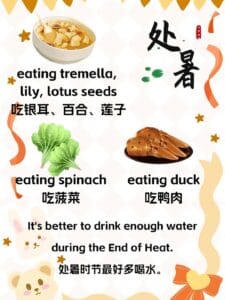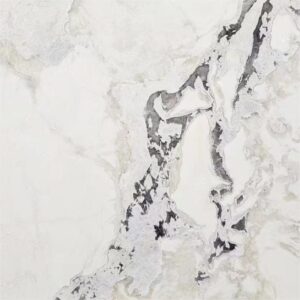✨ What is End of Heat
On August 23, China enters the 14th solar term of the traditional 24 Solar Terms system—Chushu, literally meaning “the end of heat.”
This turning point signals that the hottest days of summer are officially over. While warmth lingers in some regions, evenings become cooler, crops ripen, and nature prepares for autumn’s steady rhythm.
Philosophically, Chushu embodies balance and transformation—a movement away from intensity and toward maturity, harvest, and stability. Just as natural stone embodies permanence and resilience, Chushu reminds us that strength often lies in calmness and endurance.
🍂 The Cultural Significance of End of Heat
In Chinese tradition, End of Heat is not merely a weather marker. It reflects harmony between humans and nature. Farmers observe the skies and fields, preparing for the autumn harvest. Families embrace rituals of gratitude, protection, and health, ensuring smooth transitions into the new season.
For international readers, End of Heat offers a glimpse into the Chinese philosophy of living with the seasons, aligning daily life with nature’s cycles—a practice that has influenced cuisine, architecture, and wellness for centuries.
🌱 Traditional Customs of End of Heat
Here are some of the most well-known customs that surround this solar term:
1. Honoring Ancestors and Prayers for Harvest
End of Heat is closely linked to agriculture. In many rural areas, families offer sacrifices to ancestors and pray for abundant harvests. It is a time of gratitude and continuity, strengthening ties across generations.
2. Eating Duck Dishes
In southern China, especially in regions like Nanjing and Jiangsu, eating duck during End of Heat is a beloved custom. Ducks are considered cooling in nature according to traditional Chinese medicine, helping the body adjust as summer heat gives way to autumn dryness.
3. Flying Kites
A joyful outdoor activity associated with End of Heat is kite flying. Families and children take to open fields, letting kites soar into the high skies. Symbolically, it represents releasing misfortune and welcoming peace.
4. Planting Autumn Crops
Farmers begin to sow wheat, barley, and other autumn crops. This practice ensures that the rhythm of the agricultural cycle continues, with End of Heat acting as a bridge between summer’s intensity and autumn’s abundance.
5. Health and Wellness Practices
Traditional Chinese medicine emphasizes balancing the body at End of Heat. People drink herbal teas, eat seasonal fruits like pears and grapes, and practice gentle exercises such as tai chi, harmonizing with the body’s shift from heat to coolness.


🪨 A Subtle Connection to Stone
Just as End of Heat marks a shift from heat to balance, natural stone embodies endurance through changing conditions. Whether granite, marble, or quartzite, stone withstands time and climate, reflecting nature’s resilience.
- Mármore mirrors the elegance of changing seasons, its veins flowing like autumn winds.
- Granito symbolizes strength and durability, much like the farmers preparing fields for harvest.
- Quartzito captures timeless beauty, offering balance between practicality and artistry.
In both Chushu and stone, we find a philosophy of lasting harmony, adaptability, and quiet strength.
🍁 Final Thoughts from HRST STONE
End of Heat is more than a seasonal transition—it’s a cultural reminder that life moves in cycles. From honoring ancestors to enjoying family meals, from flying kites to planting crops, these customs embody gratitude, resilience, and renewal.
No HRST PEDRA, we believe that materials drawn from the earth—stone that carries the memory of time—resonate with the same values. As End of Heat brings calm after summer’s heat, natural stone brings grounding beauty into homes and spaces worldwide.
📞 Contact HRST STONE
Bring the harmony of nature into your projects with timeless natural stone.
📩 Email: assistant@hrststone.com 📱 WhatsApp: +86 13685922793 🌐 Website: www.quartzite-stone.com




